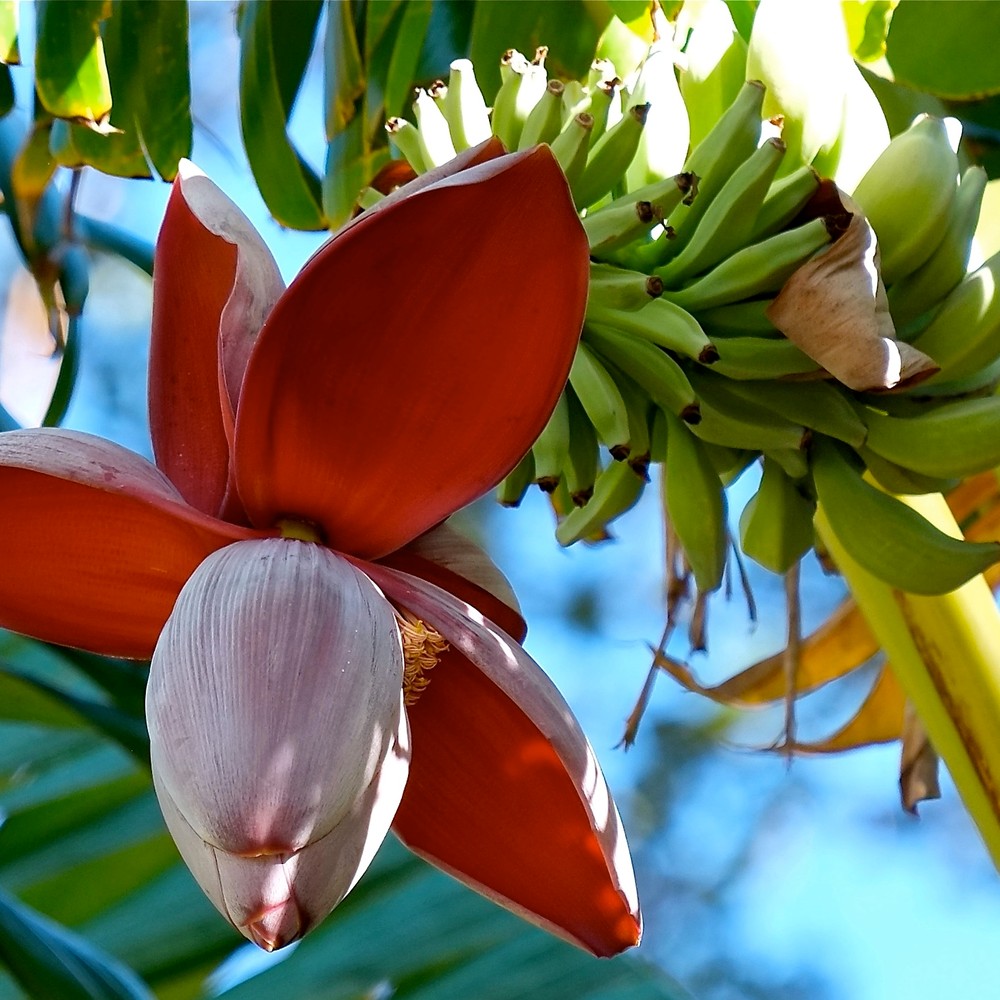Yunnan banana
(Musa itinerans)

Description
Musa itinerans, the Yunnan banana, is a species of banana. The tender inner stalk is also harvested and eaten. It is the landmark 24,200th plant species saved at Kew Gardens' Millennium Seed Bank Project. With this addition the seed bank has collected 10% of the world’s wild plant species. In China it is an important food for wild Asian elephants. Musa is one of two or three genera in the family Musaceae. The genus includes flowering plants producing edible bananas and plantains. Around 70 species of Musa are known, with a broad variety of uses. Though they grow as high as trees, banana and plantain plants are not woody and their apparent "stem" is made up of the bases of the huge leaf stalks. Thus, they are technically gigantic herbaceous plants. Musa species are used as food plants by the larvae of some Lepidoptera species, including the giant leopard moth and other Hypercompe species, including H. albescens (only recorded on Musa), H. eridanus, and H. icasia. Banana plants represent some of the largest herbaceous plants existing in the present, with some reaching up to 9 metres (30 ft) in height. The large herb is composed of a modified underground stem (rhizome), a false trunk, a network of roots, and a large flower spike. The false trunk is an aggregation of the basal portion of leaf sheathes; it is not until the plant is ready to flower that a true stem grows up through the sheath and droops back down towards the ground. At the end of this stem grows a peduncle with many female flowers protected by large purple-red bracts. The extension of the stem (this part called the rachis) continues growth downward where a terminal male flower grows. The leaves originate from a pseudostem and unroll to show a leaf blade with two lamina halves. Musa reproduces by both sexual (seed) and asexual (suckers) processes, utilizing asexual means when producing sterile (non-seedy) fruits. Further qualities to distinguish Musa include spirally arranged leaves, fruits as berries, latex-producing cells present, 5 connate and 1 member of the inner whorl distinct, and petiole with one row of air channels.
Taxonomic tree:







